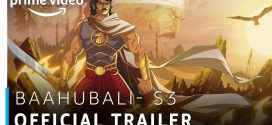Mahabharat (aka Mahabharata) is the longest poetry (yes, the original is a poetry like Ramayana – aka Ramayan) exist, created by humankind. There is something for everyone in this epic which makes it absolutely applicable in any situation to anyone.
It is said that there is nothing which is not found in the Mahabharata. From the white to black, light to dark, good to bad. The incidents of the genuineness are found together with utmost selfishness. There is so much written about Mahabharata in almost all languages (at least which are spoken in India) be it regional language books, the famous Hindi TV Serial Mahabharat (Balaji Telefilms also tried their hands on the same epic by making a tv serial named – Kahani Hamarey Mahabharat Ki), a new TV Serial named as Mahabharat is also scheduled to be aired on – Star Plus – the promos are available at: YouTube, some authors also tried providing illustrated retelling of Mahabharata as English book,… Well the list can go on and on.
Let us continue getting a look at the content of Mahabharata Episode 2 from Bharat Ek Khoj Hindi TV Serial, which continues the tale from where it left in Episode 1 of Mahabharata.
The dance plays based on the Mahabharata are found very effective and popular. The episode shows some scenes from a dance play based on the Mahabharata in – Kathakali – dance style. This is a very unique in its own approach by the TV serial director to show the effects of Mahabharata on various cultures and regions, rather then going the traditional way of portraying it. This way, we not only famous with some regional versions and local additions to the main epic, but get a chance to view it from a different perspective, and yes, it confirms that Mahabharata is found very effective by the people regardless of their region of living or language of speaking.
The narrator also tells that it is the first noted war which was fought for the land. All the previous wars from Vedic time were found fought for animals and similar resources. The battle of Mahabharata have almost vanished small kingdoms and states so that probably a new centralized kingdom can be established on the banks of Ganga. Whatever you feel about this war, but you cannot deny its influence on various social, political, economical and other aspects of India. And that is why it is considered as the symbol of changing time and various attributes. In mythology it is referred as the beginning of Kaliyuga.
The conversation between Duryodhan and Balram (and later Duryodhan and his family) is fantastic to watch. It is mostly formed by one liners in poetic form. The dialog writer deserves appreciation for the same. The conversation also show the wiser side of Duryodhan. First he asks Balram to not be angry on Pandavas. Then he tells his son Durjay to respect the Pandavas and consider them as his father. The entire visual representation is fantastic.
It is good to see the other side of Duryodhan which was often ignored. Everyone have his/her point of view. Usually the winners writes the history and hence when it is represented we see it from their point of view. We often see the winner as the white and the loser as the black; which is actually winner’s perspective. It is good that the entire saga of Mahabharata is written by Ved Vyas who wrote it neutrally. But sometimes when represented by other writers we see only evil side of Kauravas.
The director tried to well balance the contents of the Mahbharata in terms of representation.
If to talk about acting most of the seasoned actors spellbound the audience with fantastic performance, on the other hand there are some poor acting found as well. The TV serial is not as visually appealing as other TV serials made on the epic of Mahabharata, but the sets, ornaments, cloths, weapons, vehicles etc. stuff looks more realistic and authentic. Sometimes you can easily differentiate between a set and the outdoor location, while watching the TV serial. Though it doesn’t affect your interest of watching it. The background music is fantastic. The serial is not technically very advanced so in high quality DVD set also, you can find some special effects not convincing. But the direction and the content fills in the gap very firmly and makes the episode a fantastic watch.
This episode doesn’t represent the Mahabharata (second half) in the way usually viewers expect it (or habituated to see it). But it is more realistic approach with some really good positive points. This approach makes it (even more) worth watching.
 ThinkerViews – Views And Reviews Personal views and reviews for books, magazines, tv serials, movies, websites, technical stuff and more.
ThinkerViews – Views And Reviews Personal views and reviews for books, magazines, tv serials, movies, websites, technical stuff and more.



